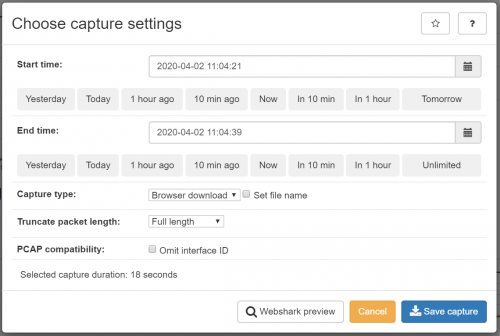Ring Buffer Configuration Guide: Difference between revisions
No edit summary |
No edit summary |
||
| Line 11: | Line 11: | ||
== Different '''Ring Buffer''' modes == | == Different '''Ring Buffer''' modes == | ||
The '''Ring Buffer''' support | The '''Ring Buffer''' support 2 different modes. The '''Single Shared Ring Buffer''' can be used if you need only one Ring Buffer. It uses one storage for the '''Ring Buffer and Pcap to Disk'''. The '''Cluster Ring Buffer''' mode allows to use multiple Ring Buffers where each Ring Buffer has multiple disks. | ||
=== Single shared '''Ring Buffer''' === | |||
This setup is the default setup on all Allegro Network Multimeters that are shipped with '''one''' internal or external storage. | |||
Revision as of 12:54, 3 April 2020
This section describes the Ring Buffer configuration and options for the Allegro Network Multimeter.
What is the Ring Buffer mode
The Ring Buffer stores packets in a temporary buffer on one or many HDDs or SSDs. The Webshark and the Pcap extraction works with historic dates.
The Ring Buffer is an optional feature for the Allegro Network Multimeter. It does not store any of the statistics of the In-Memory-Database.
Different Ring Buffer modes
The Ring Buffer support 2 different modes. The Single Shared Ring Buffer can be used if you need only one Ring Buffer. It uses one storage for the Ring Buffer and Pcap to Disk. The Cluster Ring Buffer mode allows to use multiple Ring Buffers where each Ring Buffer has multiple disks.
This setup is the default setup on all Allegro Network Multimeters that are shipped with one internal or external storage.
